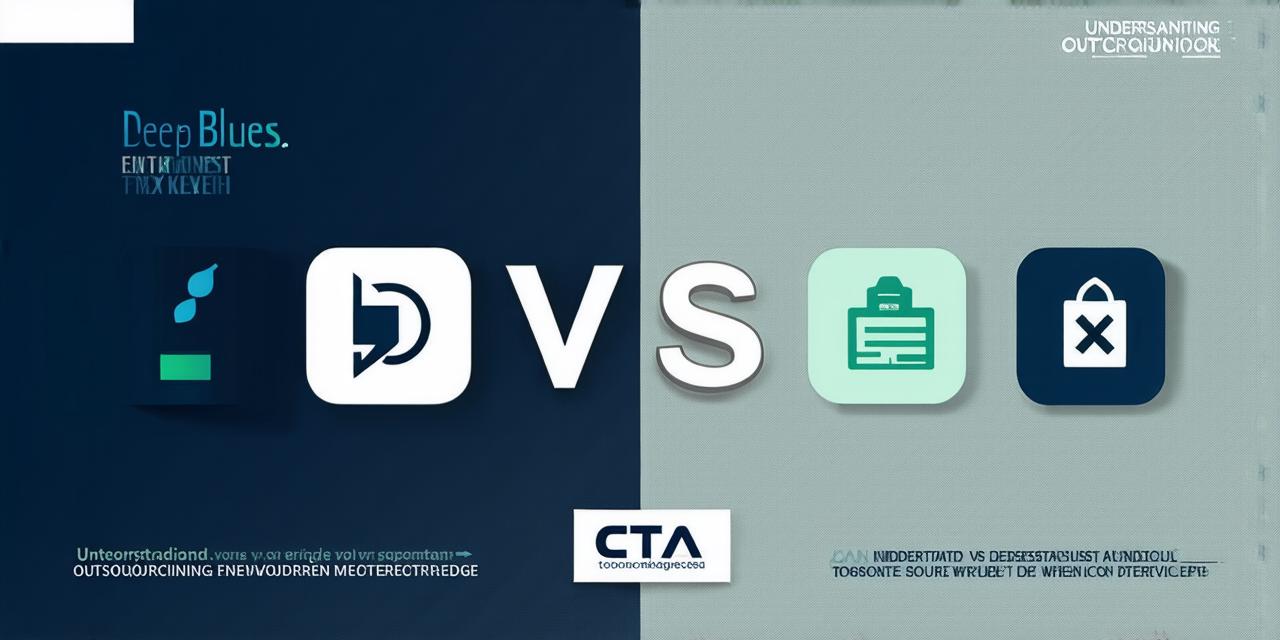What is Outsourcing?
Outsourcing refers to the practice of contracting with a third-party provider to perform tasks or processes that would otherwise be carried out in-house by an organization’s employees. This can range from simple tasks such as data entry or bookkeeping to more complex activities like software development, manufacturing, or logistics.

The primary benefit of outsourcing is cost savings. By contracting with a third-party provider, companies can reduce their labor costs and overhead expenses associated with hiring and maintaining employees in-house. Additionally, outsourcing allows organizations to tap into specialized expertise and resources that may not be available within the company.
This can lead to improved efficiency, quality, and overall performance.
Real-Life Example: IBM’s Watson
IBM is a prime example of how outsourcing can drive innovation and growth. In 2011, IBM launched its Watson platform, which uses natural language processing and machine learning algorithms to analyze and interpret large amounts of data.
The company quickly gained recognition for its ability to solve complex problems in fields such as healthcare, finance, and education. However, the development of Watson was not an easy task. It required a team of highly skilled engineers, data scientists, and software developers working together to create a scalable and secure platform that could process vast amounts of data quickly and accurately.
IBM recognized that it did not have all the necessary expertise in-house and decided to outsource some of the development work to third-party providers.
By leveraging the strengths of its partners, IBM was able to bring Watson to market faster and at a lower cost than if it had tried to develop the platform entirely in-house. Today, Watson is used by organizations around the world to solve a wide range of problems, from diagnosing diseases to analyzing financial data and predicting consumer behavior.
What are Services?
Services refer to a product or offering that is delivered to customers via a digital or physical platform. This can include software as a service (SaaS), platform as a service (PaaS), infrastructure as a service (IaaS), and other types of cloud-based services.
One key difference between outsourcing and using services is the level of control that organizations have over the process. With outsourcing, companies typically contract with a third-party provider to perform specific tasks or processes on their behalf. This means that the provider has full control over how the work is carried out and how it is delivered to the organization.
In contrast, with services, customers have more control over the process, as they can configure and customize the service to meet their specific needs. Services are typically designed to be highly scalable and flexible, allowing organizations to quickly adapt to changing market conditions and customer requirements.
Real-Life Example: Dropbox
Dropbox is a prime example of how services can drive innovation and growth. In 2007, Drew Houston and Arash Ferdowsi launched the company with the goal of creating a simple and secure way for people to share files across different devices and platforms.
They quickly gained traction by offering their service as a web-based application that could be accessed from any computer or mobile device with an internet connection. Over time, Dropbox expanded its offerings to include additional features such as version control, collaboration tools, and integrations with other popular software applications.
Today, the company has more than 500 million registered users and is valued at over $10 billion. By leveraging the power of cloud-based services, Dropbox was able to create a scalable and flexible platform that could be easily accessed by users around the world.
Factors to Consider When Choosing Between Outsourcing and Using Services
When deciding whether to outsource or use services, there are several key factors that organizations should consider. These include:
- Cost: One of the primary drivers of outsourcing is cost savings. By contracting with a third-party provider, organizations can reduce their labor costs and overhead expenses associated with hiring and maintaining employees in-house.
- Expertise: Another key factor to consider is the expertise required for the task at hand. If an organization lacks the necessary skills or resources in-house, outsourcing may be a viable option.
- Control: Organizations should also consider the level of control they need over the process. With outsourcing, companies typically contract with a third-party provider to perform specific tasks or processes on their behalf. This means that the provider has full control over how the work is carried out and how it is delivered to the organization.
- Scalability: Finally, organizations should consider the scalability of the solution. Services are typically designed to be highly scalable and flexible, allowing organizations to quickly adapt to changing market conditions and customer requirements.
Summary
In conclusion, outsourcing and using services are two different approaches that organizations can use to achieve their business goals. While both strategies have their advantages and disadvantages, the choice between them ultimately depends on a variety of factors, including cost, expertise, control, and scalability. By carefully evaluating these factors and considering real-life examples like IBM’s Watson and Dropbox, organizations can make informed decisions about which approach is best suited to their needs.
FAQs
Here are some frequently asked questions about outsourcing and using services:
- What is the main difference between outsourcing and using services?
- What are some real-life examples of how outsourcing and using services can drive innovation and growth?
- What are some key factors that organizations should consider when deciding between outsourcing and using services?
Outsourcing refers to contracting with a third-party provider to perform tasks or processes that would otherwise be carried out in-house by an organization’s employees. Services, on the other hand, refer to a product or offering that is delivered to customers via a digital or physical platform. With services, customers have more control over the process than with outsourcing.
IBM’s Watson is an example of how outsourcing can drive innovation and growth. Dropbox is an example of how services can drive innovation and growth.
Organizations should consider cost, expertise, control, scalability, and other relevant factors when deciding between outsourcing and using services.
